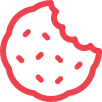![Coin [object Object] Christmas Island obverse](https://storage.googleapis.com/coins.items_v2.collectgram.com/9e1/medium/9e1e6503a77d4e666bbcf0511f9e2f57013d32f9.jpg)
Rojomano
![Coin [object Object] Christmas Island reverse](https://storage.googleapis.com/coins.items_v2.collectgram.com/6fe/medium/6fe0acfc2760c8a6a8aeb939107d29610b1d8a70.jpg)
Rojomano
| País | Christmas Island |
| Emissor | Christmas Island |
| Período | - |
| Calendário | Gregoriano |
| Período de emissão | 2014 |
| Formato | round |
| Alinhamento | Medalha ↑↑ |
| Valor | 5 |
| Valor facial | 5 Dollars |
| Fora de circulação? | Sim |
Informações técnicas | |
| Tipo de item | Moeda fantasia |
| Subtipo | Desconhecido |
| Material | Banhado - Principal: Latão / Banhado: Prata |
| Peso | 31.1 g |
| Largura | 39.9 mm |
| Altura | 39.9 mm |
| Espessura | 3.3 mm |
Comentários | |
| The Territory of Christmas Island is a territory of Australia in the Indian Ocean. It has a population of 2,072 residents who live in a number of "Settlement areas" on the northern tip of the island. The majority of the population is Chinese Australian. It is called Christmas Island because it was discovered on Christmas Day. Captain William Mynors of the Royal Mary, an English East India Company vessel, named the island when he sailed past it on Christmas Day in 1643. English navigator William Dampier, made the earliest recorded visit to sea round the island in March 1688; he found it uninhabited. The first attempt at exploring the island was in 1857 by the crew of the Amethyst. They tried to reach the summit of the island, but found the cliffs impassable. In 1887, Captain John Maclear of HMS Flying Fish landed a party and made a small but interesting collection of the flora and fauna. In the next year, Pelham Aldrich, on board HMS Egeria, visited it for ten days, accompanied by J. J. Lister, who gathered a larger biological and mineralogical collection. Among the rocks then obtained were many of nearly pure phosphate of lime; this discovery led to annexation of the island by the British Crown on 6 June 1888. Soon afterwards, a small settlement was established in Flying Fish Cove by G. Clunies Ross, the owner of the Cocos (Keeling) Islands to collect timber and supplies for the growing industry on Cocos. Phosphate mining began in the 1890s using indentured workers from Singapore, Malaya and China. John Davis Murray, a mechanical engineer and recent graduate of Purdue University, was sent to supervise the operation on behalf of the Phosphate Mining and Shipping Company. Murray was known as the "King of Christmas Island" until 1910, when he married and settled in London. At Australia's request, the United Kingdom transferred sovereignty to Australia; in 1957, the Government of Australia paid the Government of Singapore £2.9 million in compensation, a figure based mainly on an estimated value of the phosphate forgone by Singapore. Christmas Island is well known for its biological diversity. It was uninhabited until the late 19th century, allowing many species to evolve without human interference. Two-thirds of the island has been declared a National Park, which is managed by the Australian Department of Environment and Heritage through Parks Australia. There are many rare species of animals and plants on the island, making nature-walking a popular activity. Since 1997, Christmas Island and the Cocos (Keeling) Islands together are called the Australian Indian Ocean Territories and share a single administrator resident on Christmas Island. Proof | |

Quer saber o valor deste item?
Com o Prime você tem essa e outras vantagens exclusivas!
Faces

Anverso
| Legendas | ELIZABETH II CHRISTMAS island |
| Descrição | Portrait of Queen Elizabeth II. |

Reverso
| Legendas | CHRISTMAS ISLAND NATIONAL PARK · INDIAN OCEAN 5 dollars 2014 |
| Descrição | Christmas Island red crab (Gecarcoidea natalis). Value. Date. |
Borda
| Descrição | Milled |
Emissões
2014
| Calendário | Gregoriano |
| Quantidade emitida | 240 |
| Primeira emissão | 2014 |
| Última emissão | 2014 |
| Observações | The Territory of Christmas Island is a territory of Australia in the Indian Ocean. It has a population of 2,072 residents who live in a number of "Settlement areas" on the northern tip of the island. The majority of the population is Chinese Australian. It is called Christmas Island because it was discovered on Christmas Day. Captain William Mynors of the Royal Mary, an English East India Company vessel, named the island when he sailed past it on Christmas Day in 1643. English navigator William Dampier, made the earliest recorded visit to sea round the island in March 1688; he found it uninhabited. The first attempt at exploring the island was in 1857 by the crew of the Amethyst. They tried to reach the summit of the island, but found the cliffs impassable. In 1887, Captain John Maclear of HMS Flying Fish landed a party and made a small but interesting collection of the flora and fauna. In the next year, Pelham Aldrich, on board HMS Egeria, visited it for ten days, accompanied by J. J. Lister, who gathered a larger biological and mineralogical collection. Among the rocks then obtained were many of nearly pure phosphate of lime; this discovery led to annexation of the island by the British Crown on 6 June 1888. Soon afterwards, a small settlement was established in Flying Fish Cove by G. Clunies Ross, the owner of the Cocos (Keeling) Islands to collect timber and supplies for the growing industry on Cocos. Phosphate mining began in the 1890s using indentured workers from Singapore, Malaya and China. John Davis Murray, a mechanical engineer and recent graduate of Purdue University, was sent to supervise the operation on behalf of the Phosphate Mining and Shipping Company. Murray was known as the "King of Christmas Island" until 1910, when he married and settled in London. At Australia's request, the United Kingdom transferred sovereignty to Australia; in 1957, the Government of Australia paid the Government of Singapore £2.9 million in compensation, a figure based mainly on an estimated value of the phosphate forgone by Singapore. Christmas Island is well known for its biological diversity. It was uninhabited until the late 19th century, allowing many species to evolve without human interference. Two-thirds of the island has been declared a National Park, which is managed by the Australian Department of Environment and Heritage through Parks Australia. There are many rare species of animals and plants on the island, making nature-walking a popular activity. Since 1997, Christmas Island and the Cocos (Keeling) Islands together are called the Australian Indian Ocean Territories and share a single administrator resident on Christmas Island. Proof |
Adicione este item a sua coleção
Para guardar seus itens é necessário uma conta

Quer saber o valor deste item?
Com o Prime você tem essa e outras vantagens exclusivas!

